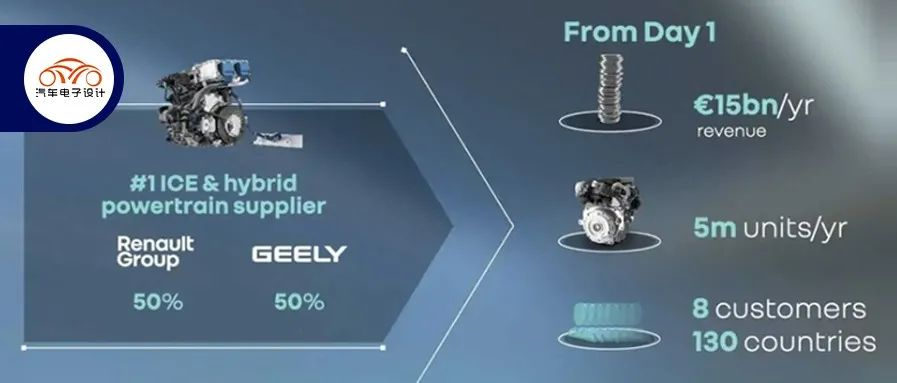Author: Zhu Yulong
The European automotive industry has been greatly affected by the overall decline in sales. Renault is particularly vulnerable because its focus is on Europe, and following the Russo-Ukrainian War, its expansion plans in Russia were reset to zero. Thus, Renault announced its restructuring plan even earlier than planned, dividing the company into internal combustion engine and electric vehicle departments. During the transition, Renault is strengthening its partnerships with Geely, Google, and Qualcomm. In this article, we will focus on Renault’s partnership with Geely.
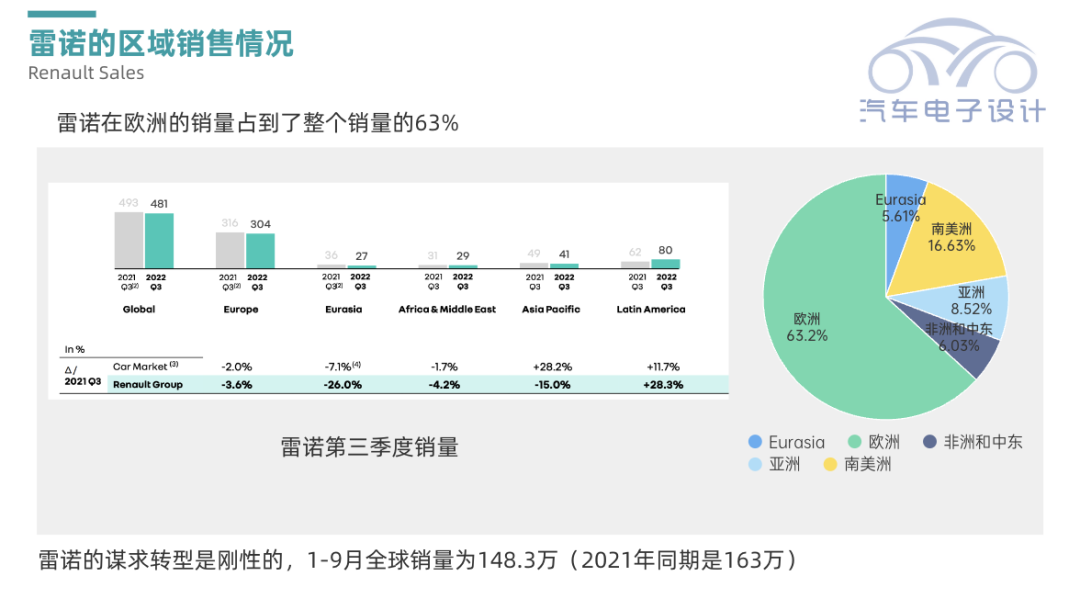
Renault’s Transformation
Renault’s goal now is to divide the group into five business areas and position itself faster and stronger in the new automotive value chain than its European competitors: electric vehicles, software development, new mobility, and circular economy.
-
Ampere: a new automotive company (electric vehicles + software) owned by Renault Group, is the group’s main business targeting the future market of Europe. The internal combustion engine models will continue to be produced for emerging markets (except Europe).
-
Traditional powertrain (engine + gearbox): Renault Group’s traditional core business focuses on developing low-emission internal combustion engines and hybrid cars for Renault, Dacia, and Renault light commercial vehicles. These areas all have their own organizations and leaders. To maintain the viability of its internal combustion engine business in the long term, Renault plans to establish a global supplier of traditional and hybrid powertrain technology with Geely, named “Horse”.
-
Alpine: emission-free sports car. It is unclear whether synthetic fuels will be included.
-
Mobilize: a financial services company that focuses on new mobility, energy, and data services markets.- The Future Is NEUTRAL: An company committed to the 360° circular economy in the automotive industry, from closed material loops to battery recycling.
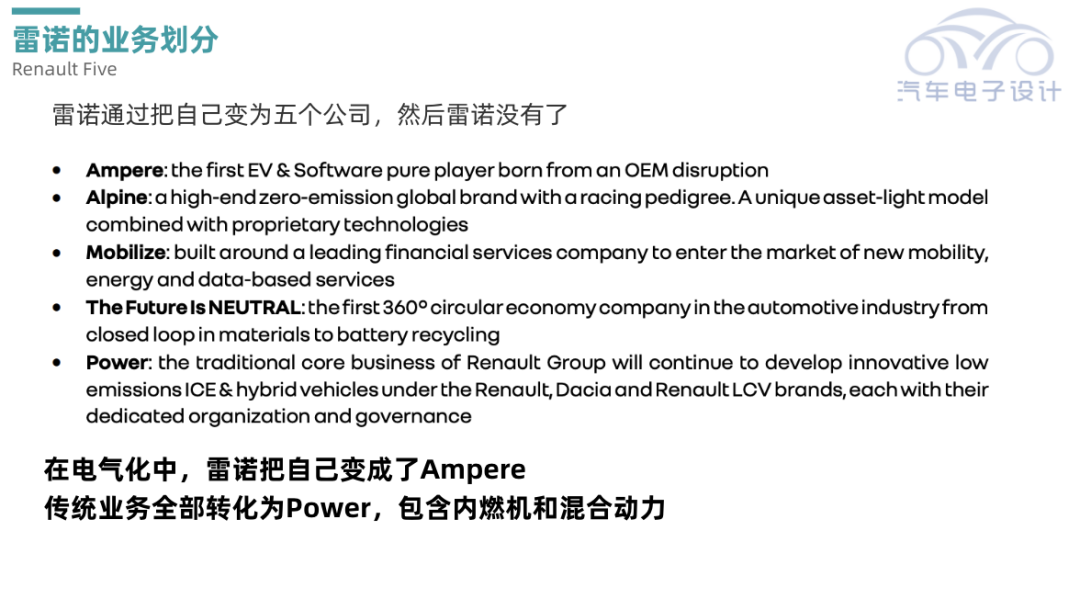
The electric department of Ampere, oriented towards the future, plans to go public on the stock exchange next summer. This part of the market is in Europe and is also developing in Europe. Renault will significantly expand its existing cooperation with Google and semiconductor manufacturer Qualcomm, as it requires support from software and chips. Google’s Android operating system will be the core component of the new electric vehicle models.
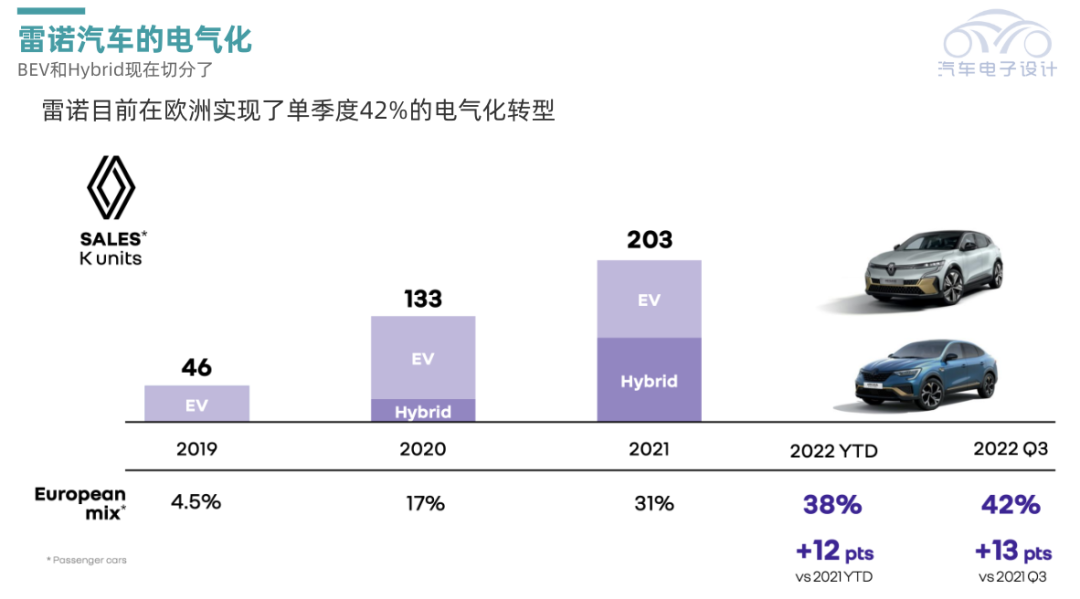
With Google, Renault can reduce software development costs by 25% and respond faster to customer needs. In the long run, Renault Group hopes to migrate its entire operating model to the cloud for greater flexibility, better performance, and higher profitability. Cooperation with Google has been greatly expanding since 2018. Now, with the creation of digital twins, this collaboration in the field of cloud computing will accelerate. Virtual vehicle avatars use artificial intelligence (AI) to make it easier to integrate new services into vehicles, as well as new in-car and out-of-car applications.The Qualcomm and Renault Group’s agreement on Snapdragon digital chassis products has come to an end and will be replaced by a new “software-defined vehicle” (SDV) solution. The development of electric vehicles around SDV includes a large number of features, including safety airbags, cruise control, cabin aspects traditionally associated with physical buttons and “high-tech” features. The new “high-performance” SDV generated by Renault and Qualcomm’s new plan is expected to be mass-produced from 2026. The new partnership may also allow Qualcomm to invest in Ampere, in which case Ampere will be responsible for vehicle circuitry and software, with Qualcomm providing the entire chip core.
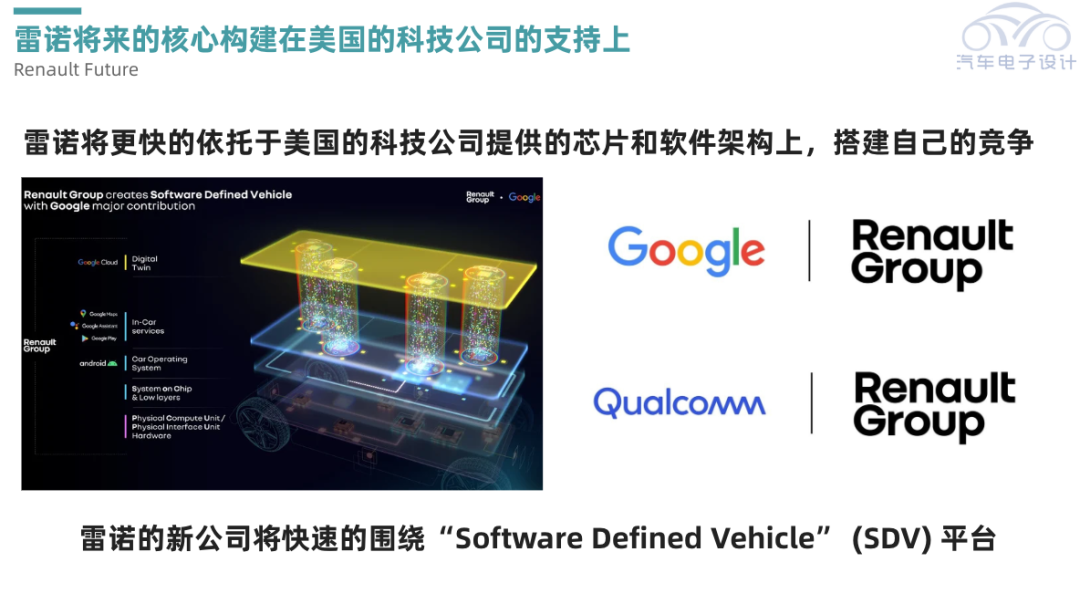
Renault and Geely jointly establish a global supplier of all components for internal combustion engine technology.# Translation
de Meo expressed special thanks to Li Shufu: “My most sincere thanks to Li Shufu.” With the splitting of the new business, the original engine and hybrid power goals will be split to serve the global market, and Renault’s market coverage in this field will be expanded from 40% to 80%. Afterwards, on November 8th, Geely and Renault Group signed a non-binding framework agreement to establish a new company to jointly research, manufacture, and supply hybrid powertrains and fuel powertrains globally. According to the framework agreement, Geely and Renault Group’s powertrain companies are expected to merge officially in 2023, and both parties will hold 50% of the shares in the new company. Geely Powertrain Company, namely Aurora Bay Technology Co., Ltd., was established in April 2012 with a registered capital of 500 million yuan, and has 6 engine factories, 2 Sino-Australian joint venture automatic transmission factories, 1 manual transmission factory, and the Australian DSIH transmission company. The Zhejiang Aurora Bay Power Equipment Co., Ltd., jointly established by Geely and Volvo in August 2021, will also be incorporated into the newly established powertrain company.
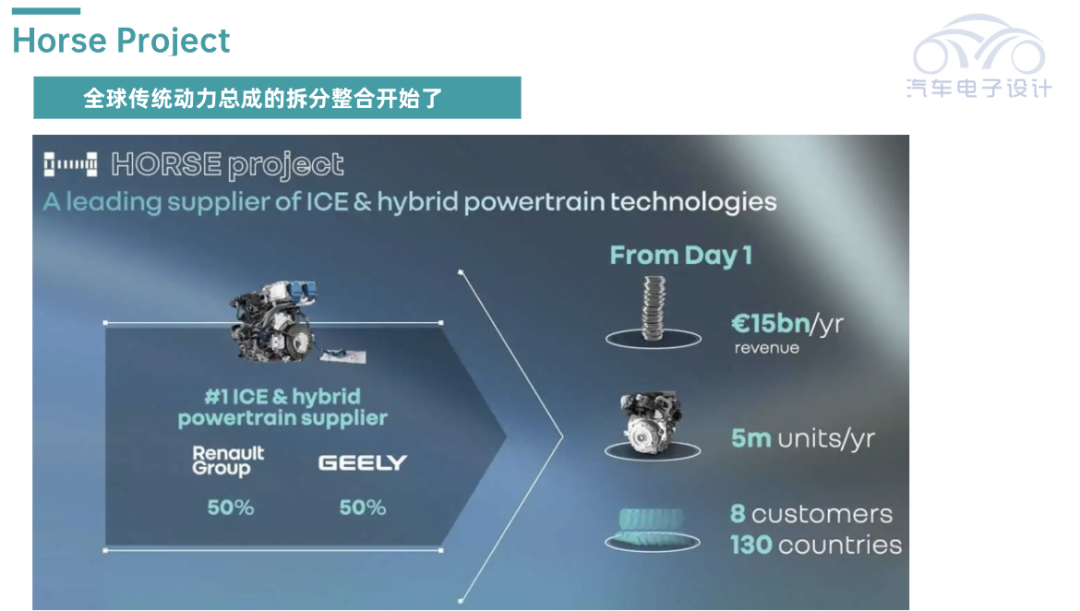
The new company established by Geely and Renault Group will rely on five global R&D centers, and plans to operate 17 factories in three continents, with a total of about 19,000 employees. The new company’s products include fuel engines, hybrid engines, plug-in hybrid engines, and transmissions, with an annual production capacity of 5 million sets. They will provide solutions for Volvo, Renault, Dacia, Geely, Lynk & Co., Polestar, Nissan, Mitsubishi, and many other automotive brands, and will also serve more third-party automotive brands in the future.
Summary: I think the world is really starting to reshape itself on a global scale, and this change is happening really fast.
This article is a translation by ChatGPT of a Chinese report from 42HOW. If you have any questions about it, please email bd@42how.com.
